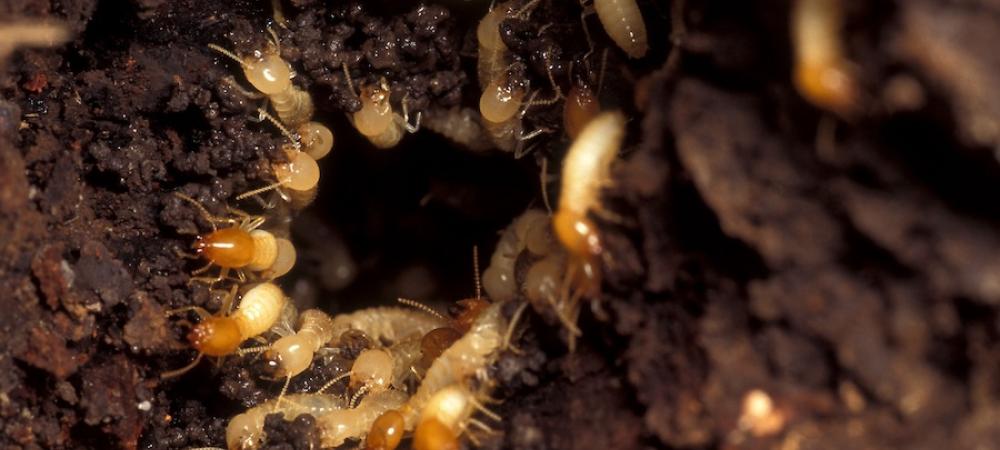Subterranean Termites in Oklahoma - Silent Invaders

Subterranean termites are not just any termites; they are the most prevalent and destructive species lurking beneath the soil in Oklahoma. These silent invaders can wreak havoc on homes and properties, often going unnoticed until significant damage has been done. Imagine these tiny creatures working tirelessly, day and night, gnawing away at the very foundation of your home. It's a nightmare scenario for any homeowner. Within this category of subterranean termites, there are several species, each with its own unique characteristics and behaviors that you need to be aware of. Understanding these differences is crucial in protecting your home from their relentless destruction. So, let's delve into the world of subterranean termites and uncover the secrets of these elusive pests.
Types of Subterranean Termites in Oklahoma
-
Eastern Subterranean Termites (Reticulitermes flavipes)
- Characteristics: These termites are typically creamy white to dark brown in color. They have straight antennae and a body that is uniformly wide without a distinct waist.
- Colony Structure: Eastern subterranean termite colonies can number hundreds of thousands to millions of individuals. They build extensive underground tunnel systems to forage for food.
- Swarming Habits: Swarming usually occurs during daylight hours in the spring, particularly on warm days following rain.
- Identification: In spring, look for mud tubes, wood damage along the grain, and swarming activity around windows and light sources.
-
Formosan Subterranean Termites (Coptotermes formosanus)
- Characteristics: Formosan termites are a more aggressive species with larger colonies than Eastern subterranean termites. They are light brown, have a broad waist, and have a darker head.
- Colony Structure: Formosan termites build extensive and complex colonies containing millions of individuals. If moisture is available, they can establish secondary nests above ground.
- Swarming Habits: Typically, Formosan termites swarm in late spring to early summer, especially at dusk and early evening.
- Identification: Infestations can be identified by large mud tubes, damage to wooden structures, and large swarming events during the evening hours.
-
Arid-Land Subterranean Termites (Reticulitermes tibialis)
- Characteristics: These termites are adapted to drier climates and are slightly smaller than other subterranean species. They are light-colored with small heads.
- Colony Structure: Colonies tend to be smaller but can cause significant damage. They forage extensively and can survive in lower moisture conditions.
- Swarming Habits: Swarming occurs in the spring, typically following periods of rain. These termites swarm during the day.
- Identification: Identifying arid-land termites involves looking for smaller mud tubes, dry wood damage, and smaller swarming events in spring.
Subterranean Termite Swarming Habits
Understanding the swarming habits of these termites can help homeowners anticipate and detect infestations early. Swarming is the reproductive process where winged termites leave their colony to mate and establish new colonies. This often results in large groups of winged termites flying from infested areas, typically in spring and early summer after rain.
Termite Identification Tips
To effectively identify subterranean termite infestations, consider the following tips:
- Mud Tubes: Subterranean termites create mud tubes to travel between their colony and food sources. These tubes are usually found on foundation walls, in crawl spaces, and along baseboards.
- Wood Damage: Infested wood often shows signs of damage along the grain. Termites consume wood from the inside out, leaving a thin veneer of timber or paint.
- Swarming Termites: The presence of winged termites indoors or around your home strongly indicates an active infestation. After swarming, termites shed their wings, leaving behind piles of wings near entry points.
- Hollow Wood: Tap wooden structures like beams or flooring. A hollow sound can indicate termite damage.
Subterranean termites pose a significant threat to homes in Oklahoma due to their destructive habits and ability to remain undetected. Homeowners can better protect their properties from these invasive pests by understanding the specific types of subterranean termites, their swarming behaviors, and key identification markers. Regular inspections by a Tulsa termite exterminator and preventative measures are essential in mitigating the risk and impact of termite infestations.
Contact us today for more detailed information and assistance with Tulsa termite control. At Dandi Guaranty Pest Control, we can provide tailored solutions to safeguard your home against these persistent pests.
Sources:
OSU Extension: Subterranean Termite Reticulitermes sp.
